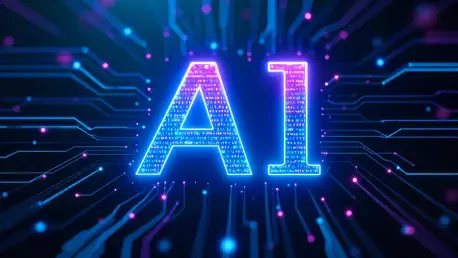Introduction to a Visual Revolution
In an era where digital content dominates every sphere of communication, the image editing industry stands at a critical juncture with an insatiable demand for speed and precision. Imagine a world where a single text prompt can transform a product image into a seasonal masterpiece in mere seconds, bypassing hours of manual labor. This is no longer a distant dream but a tangible reality in 2025, driven by groundbreaking innovations like Nano Banana AI. The current landscape of visual content creation is overwhelmed by the sheer volume of demand, with businesses and creators struggling to keep up using traditional tools. This report delves into how Nano Banana AI is reshaping the industry, offering unparalleled efficiency and creativity to meet the needs of a fast-paced digital age.
The Digital Content Landscape: A Need for Innovation
The digital content industry today is a dynamic ecosystem, fueled by social media platforms, e-commerce giants, and entertainment sectors that rely heavily on high-quality visuals. Billions of images are uploaded daily, each requiring edits to align with branding, marketing goals, or personal expression. Yet, the pressure to produce content at scale often clashes with the time-intensive nature of conventional editing software, creating a bottleneck for professionals and amateurs alike.
This growing demand for efficient solutions is evident across various demographics, from individual influencers crafting social media posts to multinational corporations standardizing product catalogs. Marketers need rapid turnarounds for campaigns, while creators seek tools that simplify complex edits without sacrificing quality. The urgency for innovation has never been more apparent, as the industry grapples with balancing speed and excellence in visual storytelling.
Traditional editing tools, while once revolutionary, now present significant limitations. Steep learning curves, high costs for software and training, and manual processes hinder accessibility and scalability. Technical barriers like imprecise selection tools and creative constraints such as inconsistent character rendering further complicate workflows. Economically, the expense of professional-grade hardware and outsourcing for specialized tasks creates a gap between vision and execution, underscoring the need for a transformative solution.
Nano Banana AI: A Game-Changing Technology
Core Features and Capabilities
Nano Banana AI emerges as a pioneering force, redefining image editing through an AI-driven approach that integrates natural language processing with advanced visual intelligence. This technology interprets complex text instructions in plain English, allowing users to describe desired edits without navigating intricate software interfaces. Such a system democratizes editing by removing the need for technical expertise, making professional results accessible to all.
Key features set Nano Banana apart from its predecessors. Its contextual understanding ensures that edits align with the surrounding scene, preserving lighting and perspective. Character consistency maintains identity across transformations, ideal for branding or storytelling, while scene preservation guarantees that modifications do not disrupt the overall aesthetic. These capabilities enable seamless edits that appear natural and cohesive, enhancing the final output’s believability.
Performance and Speed Advantages
Speed is a cornerstone of Nano Banana AI’s appeal, with processing times averaging between 3 and 8 seconds per image—a stark contrast to the minutes or hours required by manual methods. This efficiency scales effortlessly, supporting batch processing for large projects without compromising quality. Enterprises can handle extensive workloads, while individual creators benefit from rapid iteration cycles to refine their work.
Comparative benchmarks highlight Nano Banana’s superiority over traditional tools and other AI solutions. Where conventional editing might take 30 to 120 minutes for complex tasks, and competing AI platforms lag at 15 to 60 seconds per operation, Nano Banana consistently delivers results almost instantaneously. This performance edge translates into significant productivity gains, positioning it as a leader in the current market.
Real-World Impact Across Industries
Transforming E-Commerce and Marketing
In e-commerce and marketing, Nano Banana AI is revolutionizing how products are visualized and presented to consumers. Retailers can standardize backgrounds across thousands of product images, generate lifestyle scenes, or create seasonal variations without costly reshoots. Such applications streamline catalog management and ensure a consistent brand image across all digital touchpoints.
Beyond aesthetics, this technology enhances customer experiences through virtual try-ons, personalized product previews, and AI-upscaled detail views. The benefits are tangible: reduced production costs and faster time-to-market for new campaigns. Businesses leveraging these tools report significant improvements in conversion rates, as polished visuals directly influence purchasing decisions.
Empowering Content Creators and Entertainment
Content creators, particularly those in social media and digital influencing, find immense value in Nano Banana AI for scaling their output. Rapid concept visualization, consistent character representation across series, and platform-specific style adaptations enable creators to maintain a cohesive online presence. Automated thumbnail generation further optimizes engagement by tailoring visuals to audience preferences.
In the entertainment and gaming sectors, this AI supports pre-production by facilitating storyboard revisions, character design exploration, and environment visualization. Game developers utilize it for asset variation and procedural content creation, enriching player experiences with diverse customization options. The creative freedom offered by such tools empowers artists to push boundaries while meeting tight deadlines.
Challenges in Adoption and Implementation
Integrating Nano Banana AI into existing workflows presents certain hurdles that organizations must navigate. Adapting to new systems often requires learning unfamiliar processes, which can initially slow down teams accustomed to traditional methods. Additionally, setup costs for enterprise-level integration might deter smaller businesses, despite long-term savings.
Concerns around data privacy also arise, as AI tools rely on vast datasets for training and operation, raising questions about image ownership and security. Over-reliance on automated edits risks diminishing artistic control, potentially leading to homogenized outputs if not balanced with human input. Ethical dilemmas regarding the authenticity of edited content further complicate adoption in sensitive industries.
To address these challenges, comprehensive training programs can ease the transition, equipping users with skills to maximize AI potential. Hybrid workflows that combine human oversight with AI efficiency help maintain creative integrity. Robust data protection measures and transparent policies are essential to build trust, ensuring that adoption does not come at the expense of security or originality.
Navigating the Regulatory and Ethical Landscape
Regulatory considerations play a pivotal role in the deployment of AI-driven image editing tools like Nano Banana. Data usage laws vary across regions, requiring compliance with stringent guidelines on how images are processed and stored. Copyright issues also surface, as AI-generated or edited content blurs the lines of ownership and intellectual property rights.
Ethically, the potential misuse of such technology for creating deceptive or misleading visuals poses significant risks. Authenticity in edited content is paramount, especially in journalism and advertising, where trust is a cornerstone. The industry must grapple with establishing norms to prevent manipulation that could erode public confidence in digital media.
Maintaining transparency is critical to navigating this landscape. Clear disclosure of AI-edited content, adherence to global standards, and proactive engagement with regulatory bodies can foster accountability. By prioritizing ethical practices, companies can ensure that innovations enhance credibility rather than undermine it, paving the way for sustainable growth.
The Future of Image Editing with Nano Banana AI
Looking ahead, AI-powered image editing is poised to evolve beyond static images toward real-time video manipulation and 3D content creation. Nano Banana AI is at the forefront of this shift, with planned enhancements that promise to integrate video frame consistency and generate three-dimensional models from text prompts. Such advancements will redefine content production across multiple formats.
Emerging trends point to even more ambitious horizons, such as thought-to-image interfaces that could translate mental concepts directly into visuals. The democratization of professional tools is another key trajectory, enabling novices to achieve expert-level results without formal training. These developments hint at a future where creativity knows no technical bounds.
Global innovation, market dynamics, and shifting consumer preferences will shape these advancements over the next few years, from 2025 to 2027. As demand for immersive and interactive content grows, particularly in augmented reality and holographic media, Nano Banana AI is likely to adapt, offering solutions that cater to evolving needs. Staying ahead of these trends will be crucial for maintaining competitive relevance in a rapidly changing industry.
Reflecting on a Transformative Era
Looking back, the impact of Nano Banana AI on image editing marked a turning point for countless industries, breaking down barriers that once stifled creativity and efficiency. Its ability to deliver high-quality results at unprecedented speeds reshaped how businesses and creators approached visual content, setting a new standard for what was possible. The journey through adoption challenges and ethical considerations highlighted the importance of balance and responsibility in technological progress.
As a path forward, stakeholders were encouraged to invest in AI literacy, ensuring teams could harness these tools effectively. Building flexible infrastructures to accommodate future innovations became a priority, alongside fostering a culture of experimentation to stay agile. The legacy of this era lay in the empowerment it offered, urging all to embrace change with strategic foresight and a commitment to ethical standards.









